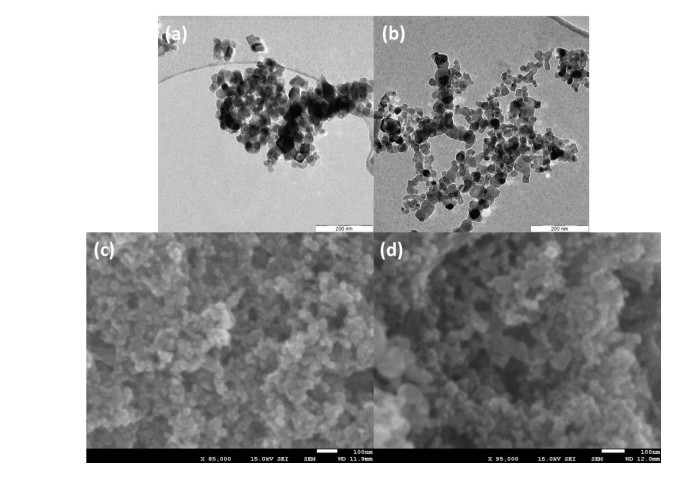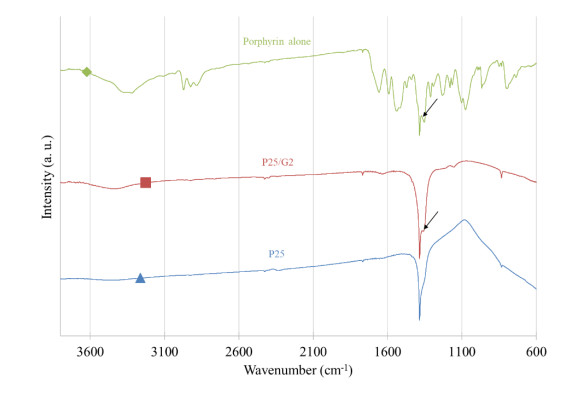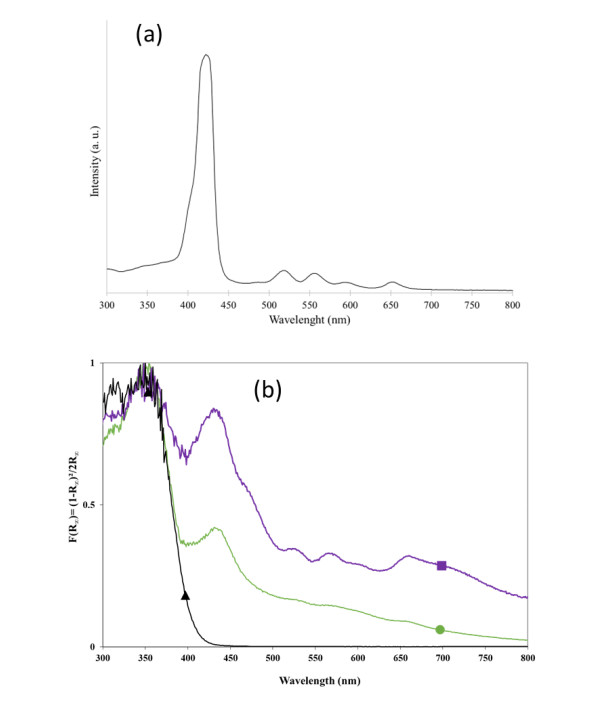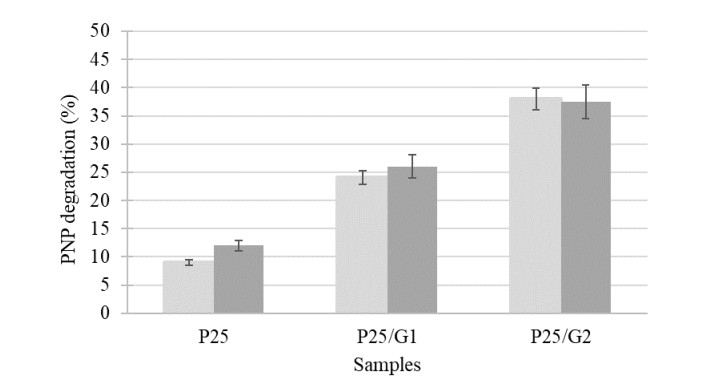1.
Introduction
Boundary value problems (BVPs) with distributional potentials hold significant theoretical and practical importance. They are not only utilized in the study of Schrödinger operators with distributional potentials in quantum mechanics but also encompass boundary value problems with transmission conditions. Within quantum mechanics, Schrödinger equations incorporating generalized potential functions are commonly employed to portray the interactions between individual particles[1,2]. These potentials are frequently associated with issues described as point interactions. Beyond quantum mechanics, such potentials are present in disciplines like solid-state physics, atomic and nuclear physics, and electromagnetism[1,3]. To provide a robust mathematical framework for addressing problems with distributional potentials, it is necessary to relax the integrability condition of the potential function in classical Sturm-Liouville theory. This approach not only extends classical Sturm-Liouville theory but also introduces new characteristics pertinent to physical problems. In recent years, scholars have explored this area from multiple perspectives, resulting in significant discoveries [1,2,3,4,5,6].
Recently, third-order boundary value problems with non-smooth coefficients and distributional potentials have garnered significant attention from scholars[7,8,9,10]. Third-order differential equations are pivotal in a variety of physical applications, such as in modeling thin membrane flow of viscous liquid and elastic beam vibrations [11,12,13].
In addition, one of the research topics of boundary value problems is boundary value problems with eigenparameter-dependent boundary conditions. A specific example is the equation of motion of a clamped-free elastic beam with a mass-spring system attached at its free end, which leads to a boundary eigenvalue problem[14]
Here the coefficients α(λ) and β(λ) are polynomials in λ of degree 3 and 2, respectively. The constant c in the differential equation is nonzero if, in addition, a fluid is flowing over the bar with constant velocity, which may be regarded as a model for pulling out glass or plastics on a solid foundation. Furthermore, many other problems in various engineering fields can also be transformed into boundary value problems with eigenparameter-dependent boundary conditions, such as heat conduction problems, and vibrating string problems and so on[14,15,16]. In recent years, scholars have had a strong interest in this kind of problem, and published a series of excellent research results[14,15,16,17].
There are many methods to study boundary value problems; one of the most important and effective methods is the spectral analysis method. That is, by defining an appropriate inner product space, the boundary value problem is transformed into a related operator problem. The operator has the same eigenvalues as the original boundary value problem, and their eigenfunctions are the same or have special correspondences.
Dissipative differential operators are a significant topic in the study of the spectral theory of differential operators and have a broad range of applications. For instance, they are widely used in various areas, including the analysis of Cauchy problems in partial differential equations, scattering theory, and infinite-dimensional dynamical systems[18,19].
In the past period of time, dissipative differential operators with general separated or coupled boundary conditions have been investigated by many authors. For example, in [20,21] the authors have investigated the general dissipative Sturm-Liouville operator and gave all the dissipative boundary conditions of order 2. Significantly, the determinant of perturbation connected with the dissipative operator L generated in L2(I) by the Sturm-Liouville differential expression has been studied by Bairamov and Uğurlu in [22], they used the Liv˘sic theorem to prove the completeness of the system of eigenfunctions and associated functions of this operator. They also have studied the dissipative boundary value problems with transmission conditions and have shown the completeness of the root functions by using Krein's theorem[23,24]. The study of fractional dissipative Sturm-Liouville operator can be found in recent work [25] and the studies of higher order dissipative operators can be found in [26,27,28], respectively.
However, there remains relatively little research on dissipative operators with special boundary conditions, such as those with eigenparameter-dependent boundary conditions[29,30]. Particularly, no conclusions have been drawn yet for such problems of odd orders. Based on the aforementioned studies, the goal of this paper is to study a dissipative third-order boundary value problem with distributional potentials and eigenparameter-dependent boundary conditions, in further by using Krein's theorem to prove the completeness theorems of the root vectors of the boundary value problem.
The paper is organized as follows: Following this introduction, in Section 2 we introduce the notation of the problems studied here and transform the original boundary value problem into a related isospectral operator problem. Section 3 shows the proof of the operator being dissipative and lists some properties of the eigenvalues of the operator. In Section 4, we review the characteristic function and the Green's function of the dissipative boundary value problem and prepare for the proof of the completeness theorems. Then we prove the completeness theorems of the boundary value problem and the operator by using Krein's theorem in Section 5. Finally, a brief conclusion is given in Section 6.
2.
Notation
Consider the general third-order differential equation with distributional potentials
here
and the coefficients satisfy:
Similar to [9] and [28], we can introduce the following notations. Firstly, let us introduce the quasi-derivative u[j] (since the equation is third-order here, we chose j = 0,1,2) of a function u as follows:
then (2.1) can be expressed as
and further, it can be handled as the following Hamiltonian system
where W and P are 3×3 matrices, Y is a 3×1 vector such that
and
For the next discussions, we first define a weighted space
and the inner product in this space as ⟨f,g⟩H=∫bafˉgw(x)dx for any f,g∈H.
For arbitrary u,v∈H, the Lagrange identity can be introduced as
Now consider the set
for arbitrary two functions u,v∈Ω, we have the Green's formula
where [u,v]t2t1=[u,v](t2)−[u,v](t1).
Then we consider the BVP consisting of the following differential equation
and the boundary conditions (BCs):
where λ is a complex parameter, and the coefficients satisfy the conditions:
In this paper will use the symbols ℜ and ℑ to denote the real and imaginary parts of a certain operator or parameter, respectively.
Next, define a direct sum space H=H⨁C with a new inner product
for any (f,f1)T,(g,g1)T∈H.
From BC (2.8), one has
which can be written as
by setting
Now consider the following set
and define the operator Lh on D(Lh) as
Then we will present the relationship between the BVP (2.7)–(2.11) and the operator Lh.
Definition 1. The system of functions u0,u1,...,un is called a chain of eigenfunctions and associated functions of the BVP (2.7)–(2.11) corresponding to the eigenvalue λj if the conditions
are realized.
Then we have
Lemma 1. Including their multiplicity, the eigenvalues of the BVP (2.7)–(2.11) and the eigenvalues of the operator Lh coincide. Each chain of eigenfunctions and associated functions of the BVP (2.7)–(2.11), meeting the requirements of the eigenvalue λj, corresponds to the chain of eigenvectors and associated vectors U0,U1,...,Un of the operator Lh corresponding to the same eigenvalue λj. In this case, the equalities
take place.
Proof. If U0∈D(Lh) and LhU0=λjU0, then the equalities l(u0)=λju0,˜R(u0)−λjR(u0)=0,l2(u0)=0,l3(u0)=0 take place, i.e., u0 is an eigenfunction of the BVP (2.7)–(2.11). Conversely, if conditions (2.12) are realized, then (u0R(u0))=U0∈D(Lh) and LhU0=λjU0, i.e., U0 is an eigenvector of the operator Lh.
Furthermore, if U0,U1,...,Un are a chain of the eigenvectors and associated vectors of the operator Lh corresponding to the eigenvalue λj, then by implementing the conditions Uk∈D(Lh),k=0,1,...,n, and equality LhU0=λjU0,LhUs=λjUs+Us−1,s=1,...,n, we get the equalities (2.12)–(2.14), where u0,u1,...,un are the first components of the vectors U0,U1,...,Un. On the contrary, on the basis of the elements u0,u1,...,un corresponding to the BVP (2.7)-(2.11), one can construct the vectors Uk=(ukR(uk)) for which Uk∈D(Lh),k=0,1,...,n, and LhU0=λjU0,LhUs=λjUs+Us−1,s=1,...,n.
Now the proof is finished. □
3.
Dissipative operator
The dissipative operator is defined as follows.
Definition 2. A linear operator Lh, acting in the Hilbert space H and having domain D(Lh), is said to be dissipative if ℑ(LhF,F)≥0,∀F∈D(Lh).
Theorem 1. The operator Lh is dissipative in H.
Proof. For U∈D(Lh), we have
where
then, applying (2.5), it follows that
From (2.9) and (2.10), it has
and
substituting (3.3) and (3.4) into (3.2), one obtains
and hence
where
Since |r|≤1,ℑβ2≥12r2, we have s≥0 and d≥0, that is
Hence Lh is a dissipative operator in H. □
Theorem 2. If |r|<1,ℑβ2>12r2, then the operator Lh has no real eigenvalue.
Proof. Suppose λ0 is a real eigenvalue of Lh. Let Φ0(x)=(ϕ0(x)R(ϕ0(x)))=(ϕ(x,λ0)R(ϕ(x,λ0)))≠0 be a corresponding eigenvector. Since
from (3.6), it follows that
since |r|<1,ℑβ2>12r2, the matrix
is positive definite. Hence ϕ[1]0(b)=0 and ϕ[2]0(b)=0, and by the BCs (2.9) and (2.10), we obtain that ϕ[1]0(a)=0 and ϕ0(b)=0. Let ϕ0(x)=ϕ(x,λ0),τ0(x)=τ(x,λ0) and σ0(x)=σ(x,λ0), be three linearly independent solutions of equation l(u)=λ0u; then by the above results it has
however, on the other hand the Wronskian of ϕ0(x),τ0(x),σ0(x) is not 0; this is a contradiction. Thus the theorem is proven. □
4.
The characteristic function and Green's function
In this section, to prepare for the proof of the completeness theorems, we review the characteristic function and Green's function and use the Green's function to study the inverse of Lh.
Let φ,ψ, and χ be the linearly independent solutions of the third-order equation (2.7) on [a,b] satisfying the following initial conditions:
and let
and the coefficient matrix of the BCs (2.8)–(2.10) be denoted by (Aλ:B), where Aλ and B are both 3×3 matrices, then we have the following conclusions.
Lemma 2. The complex number λ is an eigenvalue of the BVP (2.7)–(2.11) if and only if the characteristic function
Proof. If λ is an eigenvalue of BVP (2.7)–(2.11), then there exists a non-trivial solution
of (2.7), and the BCs (2.8)–(2.10) are satisfied, where c1,c2,c3∈C are not all zero. Since u(x,λ) satisfies the BCs (2.8)–(2.10), we have
via the initial conditions (4.1), we have
Since c1,c2, and c3 are not all zero, then the determinant of the coefficient matrix
Conversely, if Δ(λ)=0, then equation (4.3) has a non-zero solution (c1,c2,c3)T. Choose such a solution and define u(x,λ) as in (4.2). Then u(x,λ) satisfies the BVP ((2.7)–(2.11) and thus is an eigenfunction. Therefore, λ is an eigenvalue of the BVP (2.7)–(2.11). □
Definition 3. Let g(λ) be an entire function of λ, if for any ε>0, there exists a positive constant Cε>0, such that
then g(λ) is called an entire function with growth of order ≤1 and minimal type.
According to Definition 3, we can easily obtain that φ(b,λ),ψ(b,λ), and χ(b,λ) are entire functions of λ with growth of order ≤1 and minimal type; therefore, Δ(λ) is an entire function of λ with growth of order ≤1 and minimal type, and then we have the following conclusion.
Corollary 1. The entire function Δ(λ) is of growth order ≤1 and minimal type: for any ε>0, there exists a positive constant Cε such that
and hence
From Theorem 3.2 it follows that zero is not an eigenvalue of Lh(i.e.,KerLh=0), hence the operator L−1h exists. Now we show an analytical representation of L−1h.
Consider the operator equation
then the operator equation is equivalent to the non-homogeneous boundary value problem composed of the equation l(u)=f(x) and the boundary condition ˜R(u)−f1=0 and the BCs (2.9) and (2.10). Let u(x) be the solution of the above non-homogeneous boundary value problem, and set φ0(x)=φ(x,0),ψ0(x)=ψ(x,0),χ0(x)=χ(x,0), then
where Cj,j=1,2,3 are arbitrary constants and u∗(x) is a special solution.
It can be obtained by the method of constant variation
where Cj,j=1,2,3 satisfies
Solve the equations above, one has
where
By proper calculation, it can be obtained that
where
Then
substituting u(x) into ˜R(u)−f1=0 and the BCs (2.9) and (2.10), one obtains
where
then u(x) can be represented as
Let
then
Now define the operator Th as
clearly, Th is the inverse operator of Lh; this implies that the root vectors (eigenvectors and associated vectors) of the operators Th and Lh coincide.
Further, in order to better illustrate the completeness theorems, we define the operator T as
then from Lemma 1, it follows easily that the completeness of the system of root vectors (eigenfunctions and associated functions) of the BVP (2.7)–(2.11) is equivalent to the completeness of the system of root vectors of the operator T. Since φ0(x),ψ0(x),χ0(x)∈H, then
hence the integral operator T is a Hilbert–Schmidt operator, i.e., T is compact.
5.
Completeness theorems
In this section, we show the completeness theorems here. Before we can state our main completeness theorem, some supplementary lemmas are needed. The first lemma is known as Krein's Theorem.
Lemma 3. ([31], page 238) Let S be a compact dissipative operator in H with nuclear imaginary part ℑS. The system of all root vectors of S is complete in H so long as at least one of the following two conditions is fulfilled:
where n+(m,ℜS) and n−(m,ℜS) denote the number of eigenvalues of the real component ℜS of S in the intervals [0,m] and [−m,0], respectively.
Lemma 4. Let S be an invertible operator. Then, −S is dissipative if and only if the inverse operator S−1 of S is dissipative.
Proof. Assume that −S is dissipative. Then, for all y∈D(S),
Hence, for any z∈D(S−1),
since S−1z∈D(S). Hence S−1 is dissipative. □
Let K be a differential operator generated by the differential expression l(u) in (2.1) and a set of boundary conditions denoted by B(u). Let K∗ and A denote the adjoint operator and the inverse of K, respectively. Set A=A1+iA2. From the preceding analysis, it follows that A is an integral operator satisfying
Therefore, the inverse operator of the real part of A, denoted as ˜K, satisfies
Clearly, operator ˜K is a differential operator, and we denote its corresponding differential expression and boundary conditions as ˜l(u) and ˜B(u), respectively.
If K is a self-adjoint operator, then K=K∗. In this case,
and it evidently follows that ˜l(u)=l(u), ˜B(u)=B(u).
Next, consider the integral operator Th defined by (4.13); we set Th=Th1+iTh2 with Th1=ℜTh and Th2=ℑTh. Since Th is a bounded operator, then Th1 and Th2 are self-adjoint ([21], page 6), and we can obtain the following results:
Lemma 5. The operator Th1 is the inverse of Lh1, where Lh1 is the operator generated by the differential expression in (2.1) and the unique set of boundary conditions. Of course, the operator Lh1 is self-adjoint.
Proof. Clearly, the operator Lh1 is a differential operator. Analogous to the differential operator ˜K, we denote its corresponding differential expression as ˆl(u).
Note that in this paper, the operator Lh is dissipative, but its dissipativity stems solely from the BCs (2.8)–(2.10) and is independent of the differential structure l(u). Moreover, the differential expression l(u) is symmetric. Consequently, we can conclude that the differential expression corresponding to operator Lh1 is ˆl(u)=l(u); this means that the differential expression associated with Lh1 is also l(u) in (2.1).
Furthermore, the self-adjoint operator Lh1=T−1h1 is uniquely determined by the integral operators Th and T∗h, where both Th and T∗h possess unique explicit representations; it follows that the boundary conditions for Lh1 are unique.
Now the proof is finished.
□
Lemma 6. ([32], page 295 Theorem 1) If an entire function h(μ) is of order ≤1 and minimal type, then
where n+(ρ,h) and n−(ρ,h) denote the number of the zeros of the function h(μ) in the intervals [0,ρ] and [−ρ,0], respectively.
Corollary 2. If the operator Lh1 is defined as in Lemma 5, then
where n+(m,Lh1) and n−(m,Lh1) denote the number of eigenvalues of Lh1 in the intervals [0,m] and [−m,0], respectively.
Proof. From Corollary 1 and Lemma 5, we can easily obtain that the characteristic function Δ1(λ) of Lh1 is an entire function of λ with growth of order ≤1 and minimal type. Then from Lemma 6, we have
From Lemma 2, we know that a complex number λ is an eigenvalue of the operator L1 if and only if it is the zeros of the characteristic function Δ1(λ). Therefore, we can obtain that
□
Now, we are ready to state and prove the completeness theorem.
Theorem 3. The system of eigenfunctions and associated functions of the BVP (2.7)–(2.11) is complete in the Hilbert space H.
Proof. Consider the operator T defined by (4.14); similarly to Th=Th1+iTh2, let T=T1+iT2 with T1=ℜT and T2=ℑT. By the above discussions, the operator −T is a compact dissipative operator in H with a nuclear imaginary part, −T2.
Let rj be the eigenvalue of Lh1; then −1rj is the eigenvalue of −T1. From Corollary 2, we can obtain that
that is
Then from Lemma 3, we can get the system of all root vectors of −T is complete in H. And since the completeness of the system of root vectors (eigenfunctions and associated functions) of the BVP (2.7)–(2.11) is equivalent to the completeness of the system of root vectors of the operator T, then the system of eigenfunctions and associated functions of the BVP (2.7)–(2.11) is complete in the Hilbert space H. □
Obviously, from Lemma 1 and Theorem 3, we can easily obtain that the system of eigenfunctions and associated functions of Lh is complete in H.
Remark 1. Our conclusion can be extended to the case of singular end points case by using the method in [21].
6.
Concluding remarks
In the present paper, we considered the dissipative third-order boundary value problems with distributional potentials and eigenparameter-dependent boundary conditions. By transforming the considered problem to an isospectral operator problem, we prove that the operator is dissipative and has no real eigenvalues under certain conditions. Furthermore, by applying Krein's theorem, we establish the completeness theorems for both the boundary value problem and the corresponding operator.
To our best knowledge, for third-order boundary value problems with distributional potentials and eigenparameter-dependent boundary conditions, the corresponding results have not been studied yet. The eigenvalue problems and completeness of the system of eigenfunctions and associated functions are essential to problems such as the non-classical wavelets and open quantum systems. The results here are more general than the previously known results.
Use of AI tools declaration
The authors declare that they have not used artificial intelligence (AI) tools in the creation of this article.
Acknowledgments
The authors thank the referees for their comments and detailed suggestions. These have significantly improved the presentation of this paper. This work was supported by National Natural Science Foundation of China (Grant No. 12261066), Natural Science Foundation of Inner Mongolia Autonomous Region (Grant Nos. 2025MS01015 and 2023LHMS01015).
Conflict of interest
The authors declare that there is no conflict of interest.





















 DownLoad:
DownLoad: